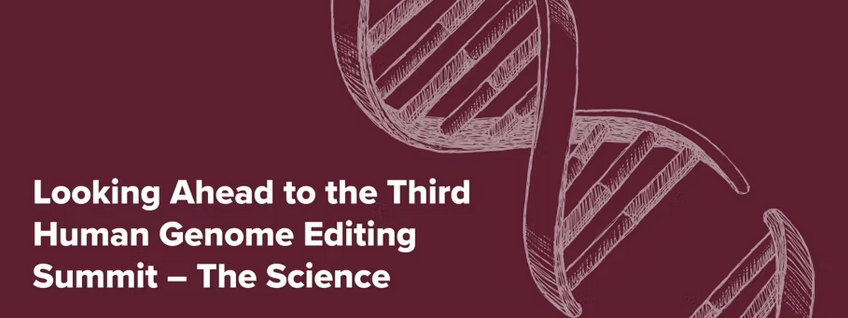Virtual Conference Wrapup: Looking Ahead to the Third Human Genome Editing Summit

The Royal Society’s 3-day online substitute for the postponed Third International Summit on Human Genome Editing seems to have been what the British call a “damp squib” — not as exciting as expected. CGS tracked the proceedings closely and posted brief daily summaries with details of the topics and speakers. The videos remain available.
The three days were split into three individual sessions on scientific developments, equity and access, and governance. Breaking it down this way created space for some expansion in the topics covered compared with previous summits. Greater attention was given to somatic genome editing and infrastructure barriers to making gene therapies widely available. There was also greater representation from African countries, including a speaker from the Sickle Cell Disease Patients Community of Tanzania. However, splitting the topics up in this way had the effect, perhaps unintentionally, of fencing some discussions off from others. Thus, cost, ethics, and policy were waved off in the discussion of scientific developments of gene therapies and in vitro gametogenesis as (literally) questions for another day.
The entire event was predicated on the future effectiveness of technologies that so far remain in development. For example, gene therapy for sickle-cell disease does show real promise in clinical trials. However, scaling that up as a treatment for the estimated 100,000 Americans who need it will be a tremendous task, let alone the far greater number worldwide. Up to 40% of the population in some African countries carry the trait, but high-tech treatments are unlikely to be available there for decades. And even then the price of gene therapy may be prohibitive.
The sole scientific presentation on germline editing focused on developments in manufacturing gametes in the lab. There were many contentious claims about how easily and reliably this could almost be done with little reflection about why. There was little consideration of whether this work aligns with technical, precautionary, or ethical guidelines, let alone whether it should be pursued at all.
Equity and Access, two closely related topics, were considered on day two of the webinar, which is itself a notable advance from the two previous full-scale summits. However, these important issues were discussed as if equivalent and mainly boiled down to the issue of pricing. Even with this narrow interpretation, solutions were, to put it bluntly, not described because they largely do not exist. The Summit in 2023 should provide an opportunity to consider matters of equity defined much more broadly, and in more depth. Doing so would require expanding the range of speakers and participants beyond the research scientists, academic bioethicists, and patient representatives featured in previous summits. Civil society advocates in particular would bring perspectives on equity grounded in social justice and human rights.
Watching, it seemed clear that a number of scientists, certainly including some of the principal organizers, remain strongly in favor of heritable human genome editing. There were, however, cautionary voices such as Leigh Turner on “medical tourism” and Laurence Lwoff on the difficulties involved in multinational regulations. Moreover, the agenda did offer CGS Associate Director Katie Hasson the opportunity to present an overview of the policy situation around the world: Essentially, it’s prohibited. Of course, the reaction of enthusiasts is that laws can be changed. The chances of effective oversight of rogue states, however, seem slim. That is exactly why global restrictions are important.
“Why Your Movement Should Oppose Designer Babies,” a counter-event co-organized by Stop Designer Babies (UK), Gen-ethisches Netzwerk (Germany), Alliance for Humane Biotechnology (USA), and GeneEthics (Australia) followed shortly afterwards with a dozen distinguished speakers (including Pete Shanks) highlighting activist concerns about heritable gene editing; a CGS report on that event will soon follow.
Mainstream news coverage of the Royal Society event seems to have been essentially non-existent. Given the continuing pandemic and the explosion of war in Ukraine, this is not entirely surprising. There was no urgent “CRISPR babies” controversy to attract attention and the event was not widely publicized. That too is something that the organizers can and should address in the run-up to the 2023 Third International Summit on Human Genome Editing. Broad and deep public deliberation on heritable genome editing is of the utmost importance. The kinds of inclusive discussions needed for true public empowerment on these matters will have to range far beyond the Summits, but Summit organizers have a responsibility to include a broader range of participants and perspectives on the potential impacts of human genome editing.



